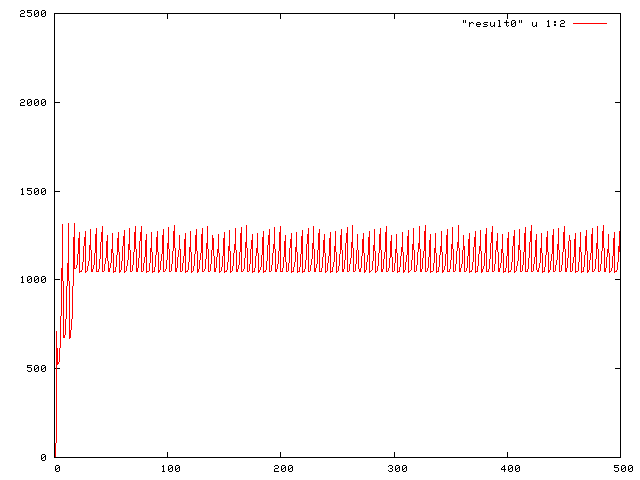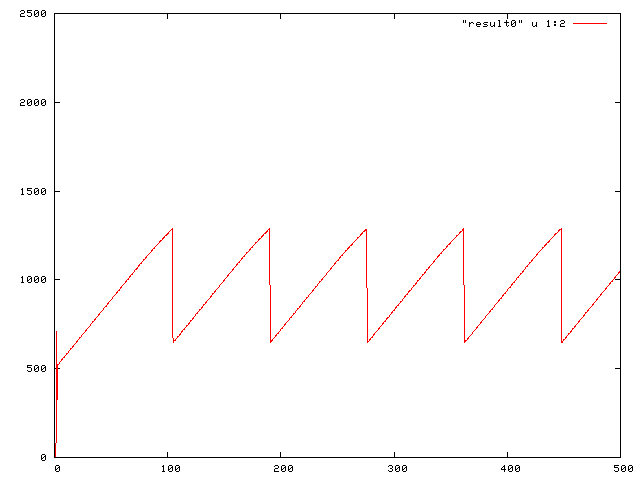This is a sample Tcl script for simple manet topology creation,
# ======================================================================
# Define options for
# ======================================================================
set val(chan) Channel/WirelessChannel ;# channel type
set val(prop) Propagation/TwoRayGround ;# radio-propagation model
set val(ant) Antenna/OmniAntenna ;# Antenna type
set val(ll) LL ;# Link layer type
set val(ifq) Queue/DropTail/PriQueue ;# Interface queue type
set val(ifqlen) 200 ;# max packet in ifq
set val(netif) Phy/WirelessPhy ;# network interface type
set val(mac) Mac/802_11 ;# MAC type
set val(nn) 7 ;# number of mobilenodes
set val(rp) AODV ;# Bio sensor routing protocol
set val(x) 670
set val(y) 510
source config
set n(0) [$ns node]
$ns at 0.0 "$n(0) color red"
$n(0) color green
$n(0) shape "circle"
$ns at 0.0 "$n(0) label sensor"
set n(1) [$ns node]
$ns at 0.0 "$n(1) color red"
$n(1) color green
$n(1) shape "circle"
$ns at 0.0 "$n(1) label sensor"
set n(2) [$ns node]
$ns at 0.0 "$n(2) color red"
$n(2) color green
$n(2) shape "circle"
$ns at 0.0 "$n(2) label sensor"
set n(3) [$ns node]
$ns at 0.0 "$n(3) color darkgreen"
$n(3) color green
$n(3) shape "circle"
$ns at 0.0 "$n(3) label Sink"
set n(4) [$ns node]
$ns at 0.0 "$n(4) color red"
$n(4) color green
$n(4) shape "circle"
$ns at 0.0 "$n(4) label sensor"
set n(5) [$ns node]
$ns at 0.0 "$n(5) color red"
$n(5) color green
$n(5) shape "circle"
$ns at 0.0 "$n(5) label sensor"
set n(6) [$ns node]
$ns at 0.0 "$n(6) color red"
$n(6) color green
$n(6) shape "circle"
$ns at 0.0 "$n(6) label sensor"
for {set i 0} {$i < $val(nn)} {incr i} {
$ns initial_node_pos $n($i) 30
}
$ns at 0.0 "$n(0) setdest 645.0 378.0 30000.0"
$ns at 0.0 "$n(1) setdest 233.0 371.0 30000.0"
$ns at 0.0 "$n(2) setdest 113.0 366.0 30000.0"
$ns at 0.0 "$n(3) setdest 392.0 474.0 30000.0"
$ns at 0.0 "$n(4) setdest 415.0 184.0 30000.0"
$ns at 0.0 "$n(5) setdest 410.0 65.0 30000.0"
$ns at 0.0 "$n(6) setdest 413.0 259.0 20000.0"
# CONFIGURE AND SET UP A FLOW
set sink0 [new Agent/LossMonitor]
set sink1 [new Agent/LossMonitor]
set sink2 [new Agent/LossMonitor]
set sink3 [new Agent/LossMonitor]
set sink4 [new Agent/LossMonitor]
set sink5 [new Agent/LossMonitor]
set sink6 [new Agent/LossMonitor]
#==========
$ns attach-agent $n(0) $sink0
$ns attach-agent $n(1) $sink1
$ns attach-agent $n(2) $sink2
$ns attach-agent $n(3) $sink3
$ns attach-agent $n(4) $sink4
$ns attach-agent $n(5) $sink5
$ns attach-agent $n(6) $sink6
#==============
#$ns attach-agent $sink2 $sink3
set tcp0 [new Agent/TCP]
$ns attach-agent $n(0) $tcp0
set tcp1 [new Agent/TCP]
$ns attach-agent $n(1) $tcp1
set tcp2 [new Agent/TCP]
$ns attach-agent $n(2) $tcp2
set tcp3 [new Agent/TCP]
$ns attach-agent $n(3) $tcp3
set tcp4 [new Agent/TCP]
$ns attach-agent $n(4) $tcp4
set tcp5 [new Agent/TCP]
$ns attach-agent $n(5) $tcp5
set tcp6 [new Agent/TCP]
$ns attach-agent $n(6) $tcp5
proc attach-CBR-traffic { node sink size interval } {
#Get an instance of the simulator
set ns [Simulator instance]
#Create a CBR agent and attach it to the node
set cbr [new Agent/CBR]
$ns attach-agent $node $cbr
$cbr set packetSize_ $size
$cbr set interval_ $interval
#Attach CBR source to sink;
$ns connect $cbr $sink
return $cbr
}
$ns color 0 brown
proc finish {} {
global ns f namtrace
$ns flush-trace
close $namtrace
#close $f0
exec nam log.nam &
exit 0
}
$ns at 5.0 "$n(1) setdest 323.0 371.0 30.0"
$ns at 5.0 "$n(2) setdest 11.0 366.0 30.0"
$ns at 2.0 "$n(4) setdest 195.0 234.0 30.0"
$ns at 3.0 "$n(5) setdest 41.0 135.0 30.0"
$ns at 4.0 "$n(6) setdest 443.0 259.0 20.0"
#===
set data [attach-CBR-traffic $n(5) $sink3 500 .2]
set data1 [attach-CBR-traffic $n(1) $sink3 500 .05]
#==
$ns at 0.3 "$data start"
$ns at 4.0 "$data1 start"
$ns at 15.0 "finish"
#===========
puts "Start of simulation.."
$ns run
#==============













